Join Dr. Alley and the Geosc10 team for "virtual tours" of National Parks and other locations that illustrate some of the key ideas and concepts being covered. For the rest of the course, the VTrips will present important material that may show up on the quizzes. In general, the slide shows start with pretty pictures to introduce you to a park, and end with pictures focused on scientific ideas. The more scientific, the more likely to be on a quiz! Here, mostly for your enjoyment, are pictures of two gloriously beautiful places, the world's oldest national park (Yellowstone) and the world's largest national park (Northeast Greenland). Have fun!
Virtual Field Trip #1: Yellowstone, the Premiere Park
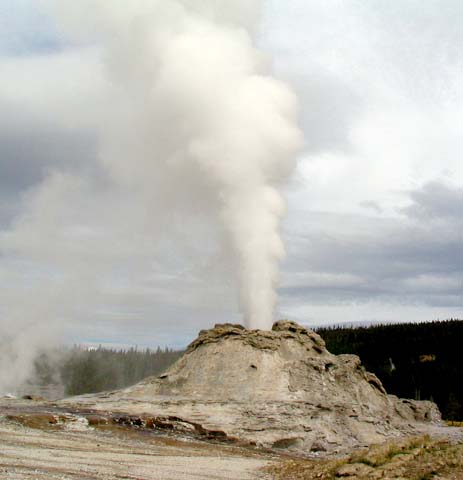

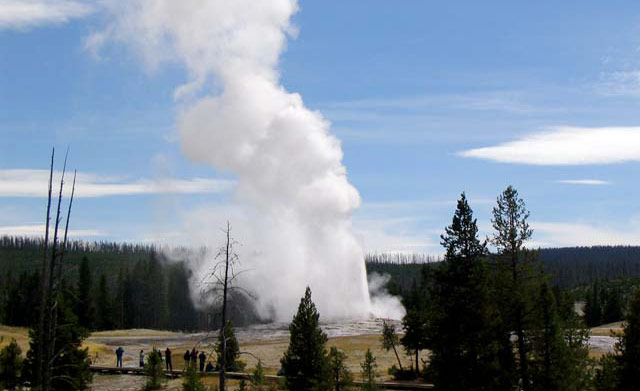
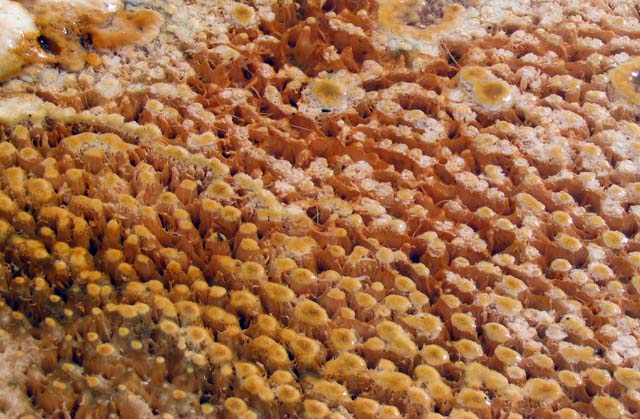
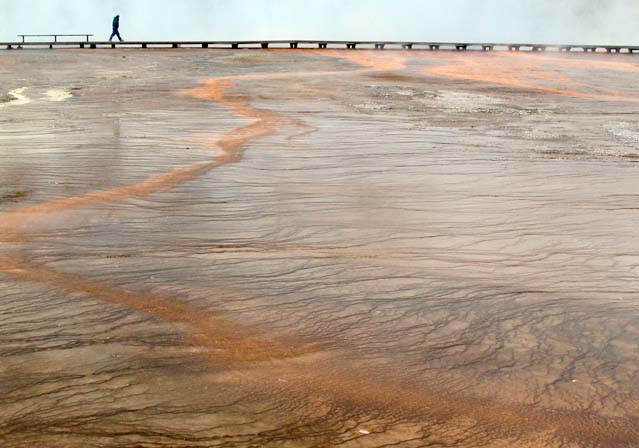
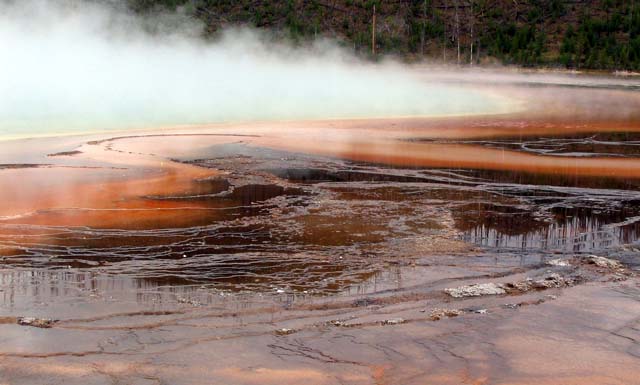
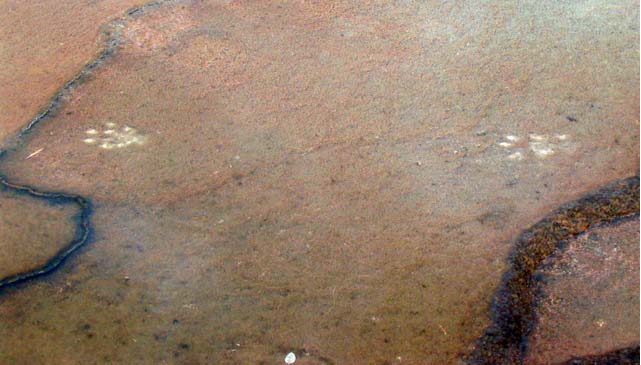
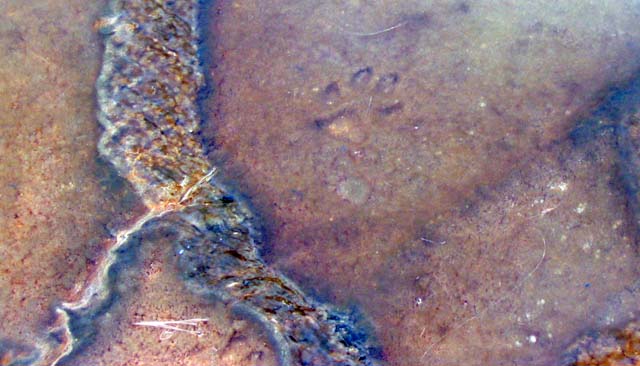
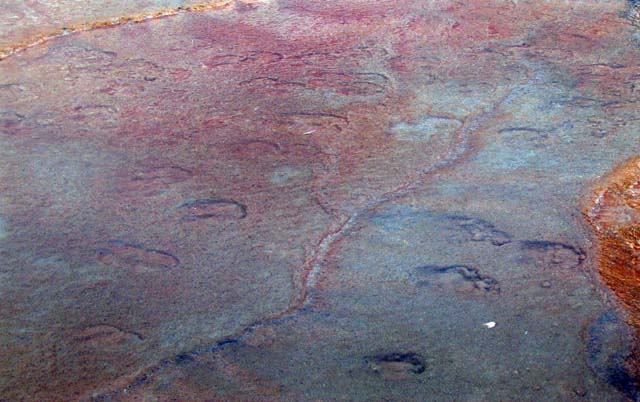

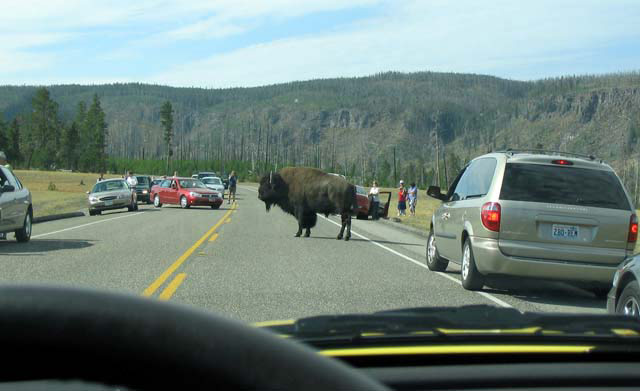
Image 1: Photo of Monument Geyser. Yellowstone: the Premier Park. Yellowstone, the world’s first national park, may be the most famous and the best--it is an incredible wonderland of geology and biology. The pictures in this show are all by R. Alley. This one shows Monument Geyser, in the Upper Geyser Basin, not far from Old Faithful.
Image 2: Photo of Lower Falls of the Yellowstone River. Yellowstone was the world’s first national park. The Washburn Expedition of 1870, which included government officials and important citizens of the Montana Territory, envisioned holding land for the common good. The 1871 Hayden Expedition, led by the director of the United States Geological Survey and including the incomparable artist Thomas Moran and the great photographer W.H. Jackson, provided information that convinced Congress to establish the park in 1872. The Lower Falls of the Yellowstone River, shown here, is one of the icons of the national parks.
Image 3: Photo of Old Faithful. Yellowstone has more than half of the world’s geysers, including Old Faithful, shown above. In proper rocks, with volcanic heat and lots of water, deep water is heated but held down by the cold water above. Finally, a little deep boiling pushes the cold water aside, the pressure on the deep water is reduced, and it flashes to steam, causing an eruption.
Image 4: Photo of Mats of Microbes in the hot runoff from a spring near Old Faithful. Many interesting and important things can be found in Yellowstone. These are mats of microbes living in the hot runoff from a spring near Old Faithful. Hot-water creatures have special enzymes, cell-wall chemicals, etc. to allow life in water that would burn you, and humans are learning how the bugs do it so we can copy them. Biological industries worth billions of dollars per year are based on the polymerase chain reaction (PCR), which is based on a Yellowstone microbe.
Image 5: Photo of Terraces in Midway Geyser Basin. Runoff from hot springs often forms terraces. Where water flows a little faster over a steeper spot, cooling and loss of dissolved gases cause precipitation of minerals dissolved in the hot, sulfurous (stinky) water, making a little ledge. Hot-water-loving microbes colonize the surfaces, with bugs of different colors preferring water of different temperatures. These terraces in Midway Geyser Basin, below the Grand Prismatic Spring, are classic.
Image 6: Photo of Grand Prismatic Spring. Here is the Grand Prismatic Spring. Rainwater and snowmelt moving down through cracks in the rocks are warmed by the volcanic heat of the Yellowstone Hot Spot, and then rise to the surface in springs as well as geysers. The next three pictures show animal tracks in the microbial mats on the terraces in the lower part of this picture.
Image 7: Photo of mountain lion tracks. Yellowstone is known for its wildlife. Animals have died when they broke through thin crusts over hot pools, but such events are rare. Elk often use the vegetation-free upper surface of Mammoth Hot Springs as a retreat from mosquitoes and other bugs, and many creatures enjoy the warm waters of the park during the winter. Here, the tracks of a mountain lion show white where the animal broke the bacterial mat. Lions are four-toed, but often put their hind feet where their front feet were, complicating the appearance of the tracks, as seen here.
Image 8: Photo of Coyote Tracks in spring deposit. Yellowstone now has a healthy population of wolves, and many coyotes, including the one that made the track shown here. The national parks were usually established for geological reasons, when the park boundaries separated wilderness containing amazing geological features from wilderness containing slightly-less-amazing geological features. Now that humans are using so much of the country and the world, the parks are becoming islands of nature in a human-dominated world, and so the parks are critical for maintaining biodiversity.
Image 9: Photo of Bison tracks in spring deposit. Bison (or, informally, buffalo) once thundered across the Great Plains of the U.S. in uncounted numbers. Uncontrolled shooting nearly exterminated the bison, but those protected in Yellowstone persisted and helped preserve the species. Here are bison tracks, in the same spring deposit.
Image 10: Photo of grazing bison. And, here are the bison, just down the road along the Firehole River. Hot springs in the river bed may have been behind the tall tale attributed to Jim Bridger, that the Firehole River ran so fast that friction made it hot on the bottom.
Image 11: Photo of Bison on the road creating a traffic jam. And here is a bison jam. The national parks must conserve for future generations, but also provide enjoyment for the current generation of people. Sometimes, doing both isn’t easy. This picture was taken in September, after the crowds had returned home; in midsummer, this really would have been a traffic jam.
Virtual Field Trip #2: Northeast Greenland National Park
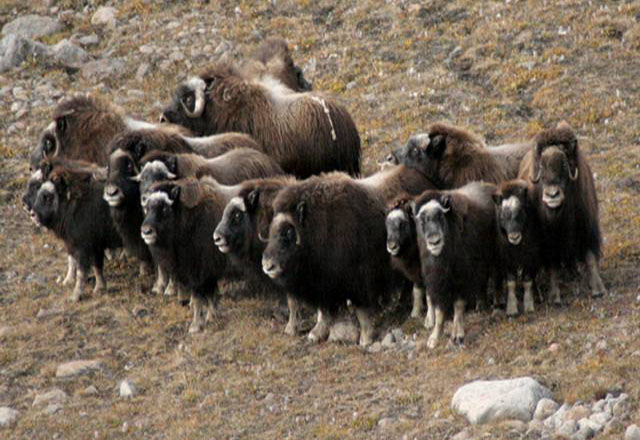
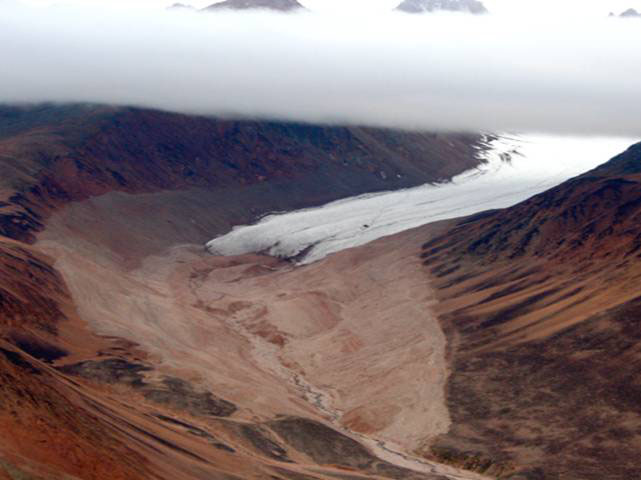
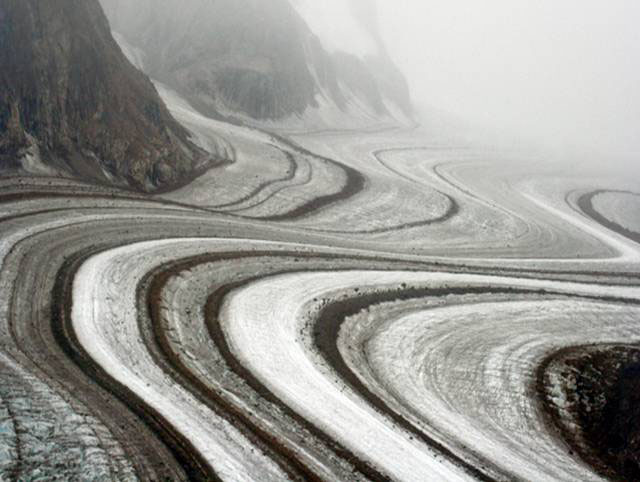
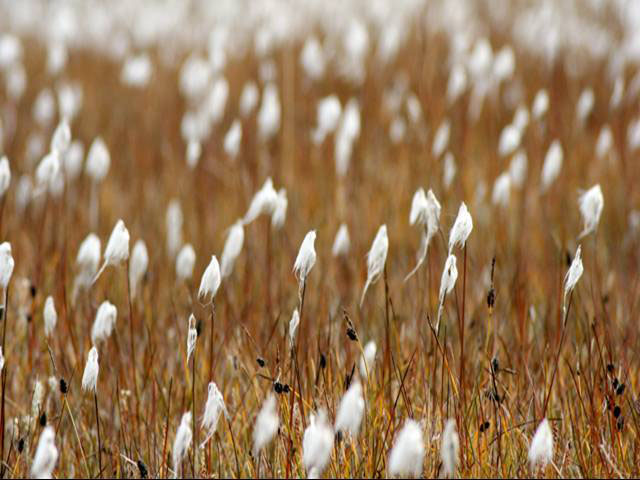
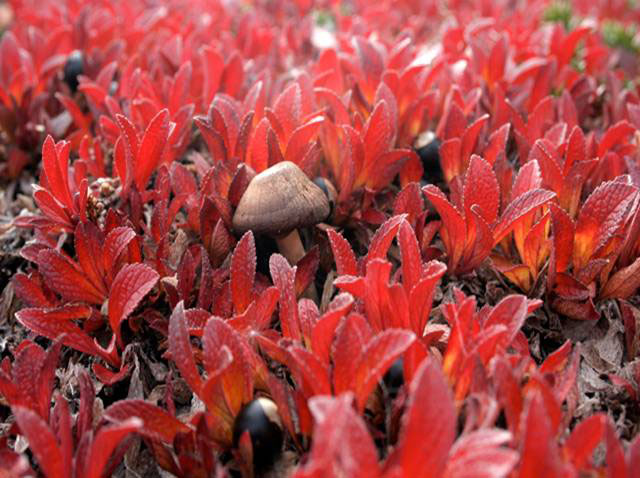
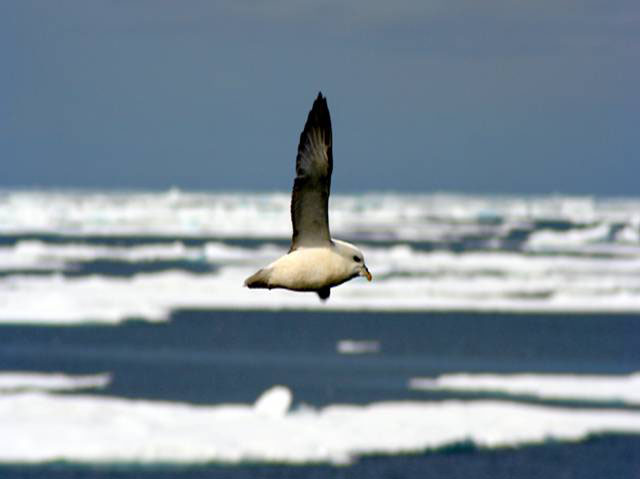
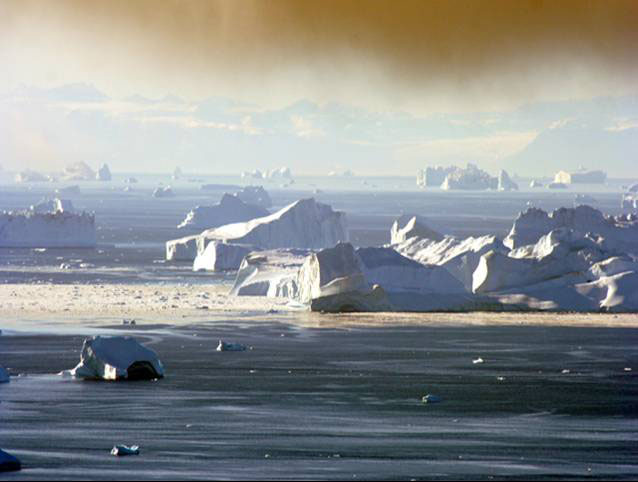
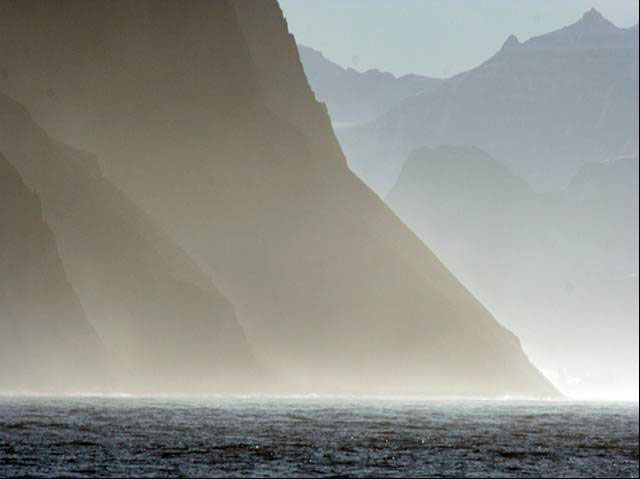
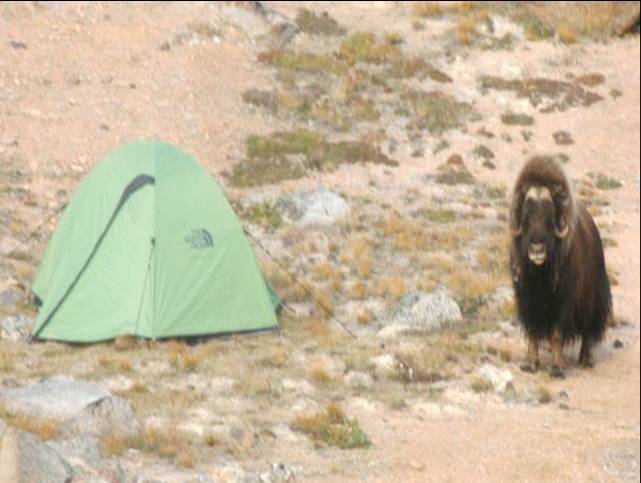
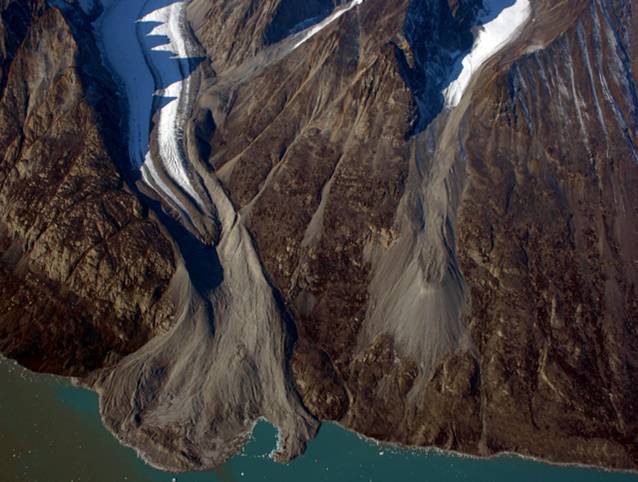
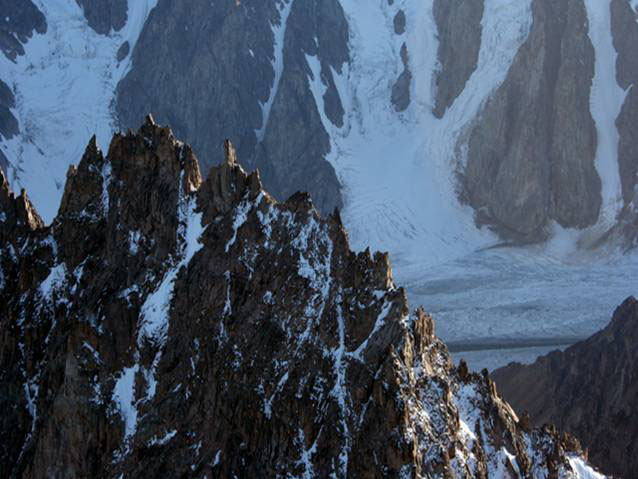
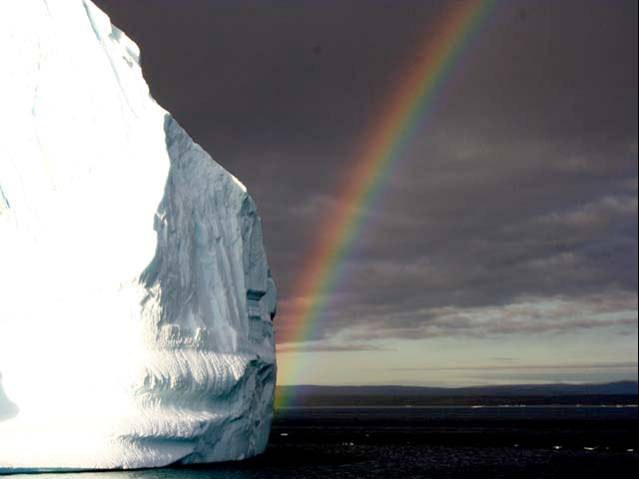
Image 1, Picture of musk ox on the tundra in North East Greenland National Park. Preserving the best of the landscape in national parks is a U.S. invention that much of the world has adopted. The largest national park, Northeast Greenland National Park, is in NE Greenland and was founded in 1974. Both Dr. Anandakrishnan and Dr. Alley have conducted research in it. The pictures here were taken by Richard Alley in or just outside of the national park, during a research expedition to Scoresby Sund in the autumn of 2005. Enjoy!
Image 2, Picture of a glacier. Most of the park is on the Inland Ice, the great, two-mile-thick ice sheet that covers most of the island of Greenland, and one that could raise global sea levels about 23 feet (7 m) if melted. However, some of the park includes spectacular coastal mountains and the rich adjacent seas. This glacier has melted back over the last century from the light-colored regions around it. The mountain peaks from which the glacier flows are barely visible above the clouds.
Image 3, Picture of Corridoren Glacier. Corridoren Glacier. The great Inland Ice of Greenland is thick and extensive, but many smaller glaciers exist in the coastal mountains. The black stripes on Corridoren are medial moraines—each is a band of rocks that were picked up by the ice, or that fell on the ice, from a ridge that separated two tributary glaciers. The picture was taken from a helicopter flying just below a low cloud deck, looking west into the interior of Milne Land.
Image 4, Picture of cotton grass on the tundra. Cotton Grass. The tundra is one of the most beautiful, and least appreciated, landscapes on earth. Cotton grass, shown here, grows in wet places, and produces seeds that are carried on the wind. The picture was taken in Kjove Land, just north of Scoresby Sund.
Image 5, Picture of a mushroom nestled in bearberry. Bearberry provides the most spectacular fall colors on the tundra. Here, a mushroom nestles amid the fruit and leaves of the tundra plant. The fruit is edible, but not especially tasty.
Image 6, Picture of a Fulmar (a bird similar to the albatross) flying over the sea ice. Fulmar and Sea Ice. Fulmars are akin to small albatross, true sea birds with the special glands along their noses that allow them to excrete the salt from salt water, so that there is no need for the birds to go find fresh water. Fulmars often “surf” the wind around boats, or skim low over the water. Behind this fulmar is sea ice, frozen ocean water. Freezing the ocean is not as easy as freezing freshwater, both because salty water freezes at a lower temperature, and because seawater becomes denser as it cools all the way to the freezing point, and may sink to great depths in the ocean, allowing warmer water to flow in and replace it.
Image 7, Picture of icebergs in Scoresby Sund. Icebergs, Scoresby Sund. A lot of snow falls on Greenland—enough each year to make a layer about 1/25 inch (1 mm) over the whole ocean. About half of Greenland’s snow melts and runs into the ocean. The other half flows to the coast and breaks off as icebergs, as seen here. Recent warming has increased Greenland’s loss of meltwater and icebergs; the ice sheet and surrounding mountain glaciers are shrinking and helping raise sea level. This is freshening the North Atlantic, favoring winter freezing; the future may see warmer summers but colder winters from this strange situation.
Image 8, Picture of Scoresby Sund. Kap Brewster. The south side of the great fjord of Scoresby Sund is guarded by the bird cliffs of Kap Brewster. Huge flocks of sea birds nest high on the rocks and feed in the rich ocean nearby. The steep slopes were carved by the glaciers that once filled Scoresby Sund.
Image 9, Picture of a musk ox next to a tent. Musk Ox, Schuchert Dal (Valley). The dramatic Schuchert Valley spreads north from Scoresby Sund, and is well-populated by musk oxen. With about the same size, shape and speed as minivans (not really, but not that far off!), musk oxen are beautiful denizens of the tundra. More closely related to mountain goats than to bison, the musk oxen form defensive circles around their young if threatened, as shown in the first slide of this show. Here, a bull has wandered into our research camp. The best way to handle musk oxen is to leave them alone; although typically peaceful, they have sharp and potentially lethal horns, and they are a lot faster and bigger than you are.
Image 10, Picture of Alpefjord. Alpefjord, a major tributary to Kong Oscar Fjord, north of Scoresby Sund. The glaciers flow from the high ground at the top of the picture toward the sea at the bottom. The glaciers now end about where the white ends, but extended much farther in the recent past, as shown by the piles of rock and rubble, called moraines, that surround the ice. Almost every mountain glacier on Earth for which we have data has shrunk over the last century or so. Mountain glaciers have enough frozen water to raise sea level globally by about 1 foot (just under 1/3 m) if all melted.
Image 11, Picture of an arete. An arete (a knife-edge ridge left when two glaciers erode into a highland, one from each side) sits above glaciers in the Stauning Alps of the Northeast Greenland National Park. Many knowledgeable people consider the Stauning Alps to be the most spectacular alpine scenery on the planet. There is no objective way to pick a “winner”, but the Stauning Alps are truly stunning.
Image 12, Picture of an Rainbow and an icerberg. Rainbow and iceberg, Scoresby Sund. The warmest summertime weather is well below freezing at the top of the ice cap, but temperatures in the 50s Fahrenheit are common along the coast, where the limited summertime precipitation often comes as rain.